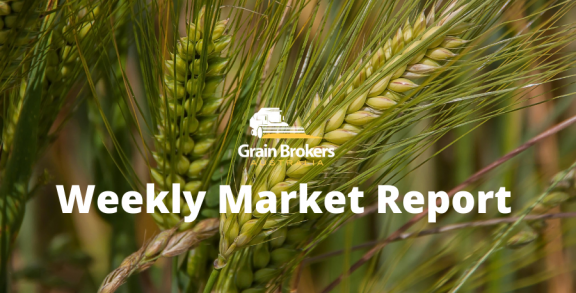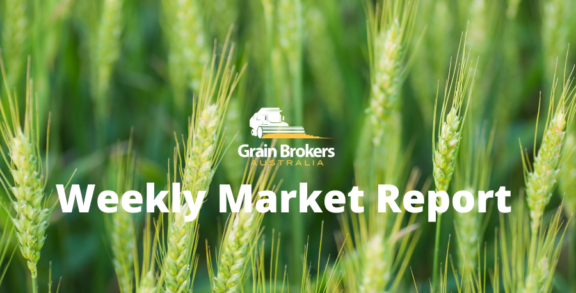
The extent of the winter crop damage and subsequent production loss on account of the devastating drought conditions throughout much of Canada this year is borne out in the latest Outlook for Principal Field Crops, released by Agriculture and Agri-Food Canada late in September.
The outlook incorporates Statistics Canada’s yield estimates that are based on a model featuring analysis of coarse resolution satellite data, agro-climatic data and limited field data. The washup is a forecast decrease of almost 30 per cent in total field crop production in 2021/22 compared to the previous season.
The decline for the Western Canadian provinces, where most of the country’s field crop output occurs, was even more dramatic, with production down 40 per cent year-on-year and 36 per cent below the five-year average. Partially offsetting the woes in the country’s west was a slight increase in Eastern Canada’s production compared to 2020/21 due to much more favourable climatic conditions. As at August 31, drought encompassed 94 per cent of Western Canada’s agricultural land. The September 30 update has not been released at the time of writing.
Canadian farmers planted 31.518 million hectares to all field crops in the current season, up slightly from 31.491 million hectares in the 2020/21 season. However, production plummeted from a record 99.75 million metric tonne last year to 70.384MMT for the harvest that is just winding up. That may be a big drop, but much of the local Canadian commentary suggests that the cuts were not nearly deep enough considering the poor season. Historical data reveals this is the largest year-on-year percentage drop seen since 1961 when total production dropped 38.2 per cent.
Yield across all field crops dropped from an average of 3.27 metric tonne per hectare to 2.33 metric tonne per hectare. Nevertheless, the particularly interesting statistic was the proportion of abandonment which only rose from 1.0 million hectares to 1.32 million hectares, a surprisingly minor jump for such a disastrous production season.
The coarse resolution based modelling adopted for the September report relies on historical averages for the harvested area, which is a shortcoming of the methodology in a season such as that experienced by Canadian farmers in 2021. It means that most of the reported production loss has been due to lower yields, leaving the production door ajar for further falls when a reality check is made of the satellite analysis before the November update.
Looking at the data at a commodity level, we find that total wheat production is estimated at 21.715MMT, down more than 38 per cent from Canada’s second-biggest ever harvest of 35.183MMT last year. This will be the smallest wheat crop since the 2007/08 marketing year. Accordingly, wheat export forecasts have fallen dramatically from 26.407MMT in 2020/21 to 15.6MMT in the current marketing year, according to the AACF report. This compares to the latest USDA forecast of 17MMT, but they do have higher production at 23MMT.
Canada is the world’s largest producer of durum wheat, and total production of 3.545MMT is included in the total wheat production figure. This is down 46 per cent on last year’s harvest. Yields have dropped a mammoth 77 per cent year-on-year from 2.86 metric tonne per hectare to 1.62MT/ha. With tight carry-in stocks, total supply has dropped 41 per cent from 6.946mMT to 4.322MMT, the fifth-lowest on record.
The supply tightness out of Canada has pushed European Union durum consumers to Australia, with the potential for much more business once the current crop is harvested. Canadian durum exports to the EU from July 1 to September 19 totalled just 170,100 metric tonne, down from 485,000 in the first 12 weeks of 2020/21. In the same period, Australian exports of durum wheat to the EU went from zero last year to 65,000 metric tonne this year.
The EU imported 2.92MMT of durum wheat last year, with Canada supplying 2.03MMT, around 35 per cent of total exports and almost 70 per cent of EU import demand. With the lower supply in Canada comes lower exports, which are expected to drop from 5.773MMT in 2020/21 to 3.1MMT in the 2021/22 marketing year. While Australian exports can’t fill the entire gap, it will be impossible for Canada to export the same quantity to the EU this season.
Barley production is estimated at 7.141MMT, the smallest harvest since 1968. This is down 33.5 per cent from last year’s harvest of 10.741MMT. This is despite a 7.8 per cent increase in the harvested area from 2.809 million hectares to 3.029 million hectares. It will put a severe dent in exports, which are expected to fall by more than 55 per cent from 4.572MMT last season to just 2.050MMT in the current marketing year.
Consumers are not only faced with lower production out of Canada but serious quality issues as well. The average protein level in this year’s barley crop is around 14 per cent, creating a giant headache for brewers. High protein malt creates challenges such as low extract levels, haze formation in beer and reduced shelf life of the packaged product.
Canada’s canola crop has not been spared! Canada is the world’s biggest producer and exporter of canola, but the drought conditions have cut expected production by 34.4 per cent from 19.485MMT last harvest to 12.782MMT this year. Export expectations have plummeted accordingly, down 36.2 per cent from 23.042MMT to 14.699MMT.
This production hiccup comes at a time when global demand is increasing with the push to reduce greenhouse gas emissions under the Paris Agreement. According to a recent Rabobank report, “government initiatives to curb emissions in the northern hemisphere will fundamentally change, and be the key drivers of, the global canola market”.
The increased demand and the lower production out of Canada saw new crop Australian canola trade above the AU$1,000 per metric tonne mark for the first time ever last Thursday. Unheralded prices in a season where Australian production is expected to be a record is a huge bonanza for domestic growers. Not to mention the potential kick for next year’s planting intentions, which will no doubt be replicated in Canada, weather permitting.
It has definitely been a year to forget for most Canadian grain farmers. Hopefully, with harvest still ahead of us, it will be one to remember for most Australian grain farmers. We certainly wish no ill will upon our Canadian cousins, but as the saying goes: one person’s loss is another one’s gain.
Call your local Grain Brokers Australia representative on 1300 946 544 to discuss your grain marketing needs.





